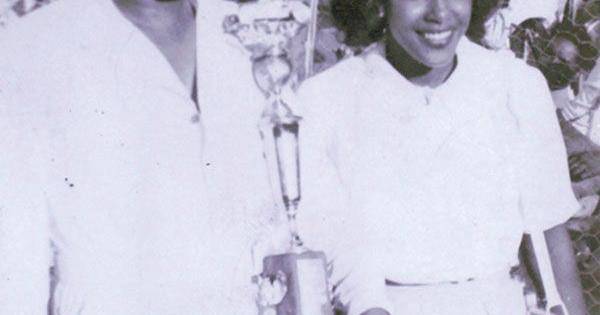Brave pioneers who blazed trail in NASCAR, being lost to time | Nascar Insider

Between the on-track success of Camping World Truck Series driver Darrell Wallace Jr. and the election of the late Wendell Scott to the NASCAR Hall of Fame, there’s been considerable focus lately on the role of black drivers in the history of NASCAR.
Wallace, a three-time winner on the Truck circuit in 2014, is the most successful African-American driver since Scott, who was the first person of color to be a regular driver in the series now known as Sprint Cup.
What hasn’t been publicized is the story of a group of pioneering black drivers who had a league of their own in Georgia even before the formation of NASCAR in 1948.
Their organization was called the Atlanta Stock Car Club. From the late 1940s through the mid-1950s, the drivers raced at their home track in Lithonia, Georgia, and also at tracks across the Southeast, in cities including Chattanooga, Calhoun and Jefferson in Tennessee and Augusta and Thomaston in Georgia.
Like the all-black baseball teams of that era of racial segregation, the Atlanta Stock Car Club members ran in all-black races, most of the time in front of predominately black spectators. But club members also raced at tracks where white drivers usually ran.
The star drivers of the Club included the Muckle brothers, George and Ben, Richard “Red” Kines, Charlie Scott, Arthur “The Decatur Express” Avery, Robert “Juckie” Lewis, James “Suicide” Lacey and Joe Daniels.
The exploits of the black racers weren’t widely publicized at the time, but they were well-documented in the pages of the Atlanta Daily World, a newspaper for Atlanta’s black community. The paper also carried advertisements for and stories about races at predominately white tracks like Atlanta’s Peach Bowl, where the promoters welcomed black fans throughout that track’s existence.
The racers got prominent play in the Daily World.
A victory by Red Kines in a Sunday afternoon race at Thomaston in August of 1947 was the lead story on the next day’s sports page.
The story reported that Kines, a former football star at Booker T. Washington High School and a Postal Service employee, drove a ’39 Ford known as the “Burger Special No. 1” to victory.
He took the lead on the start, fought off challenges first from Calvin Williams, then Charlie Scott, to take the victory in front of 3,000 fans. His share of the prize money was $410, including his earnings from finishing second in the first qualifying race.
An article in the Gainesville Times told of a race in September 1947 at Jefferson Speedway, a predominately white track, in which Otis Pruitt, driving car No. 13, was injured in a Lap 13 crash. The extent of his injuries was unknown. H. Miller and George Muckle swept the main events.
Mixed among the stories in the Daily World about Jackie Robinson and other black baseball stars of that era are recordings of Ben Muckle breaking Joe Daniels’ five-race win streak at Lithonia Speedway in 1951. There’s an account of another Lithonia race where Daniels knocked down a lamp post, sailed down an embankment, “then rolled back like a Navy jet” to wrestle the win from George Muckle.
Racing historian Mike Bell from Decatur, Georgia, is among the few who know the full history of black stock-car racing.
Bell, as a 17-year-old, was in the infield at Jacksonville to witness Wendell Scott’s historic win. He also has done extensive research on the Atlanta Stock Car Club.
Bell said the early black drivers were plenty talented, even if their equipment often wasn’t equal to their skills.
He pointed out that Atlanta Stock Car Club member Charlie Scott (no relation to Wendell Scott) rode his racing talents into the history books as the first black to compete in the series now known as Sprint Cup. In 1956, Scott drove a Chrysler owned by Carl Kiekhaefer, the dominant car owner of that era, in the sport’s biggest race of the year – on the beach-road course at Daytona. He started 19th and finished 14th in a field of 80. Scott’s teammates that day were Tim and Fonty Flock, Buck Baker and Speedy Thompson – all major stars of that era.
“There are a lot of people who believed Charlie Scott was the best of the black racers,” Bell said.
Despite the fast start, and the potential of drivers like the Muckle brothers and Charlie Scott, the black racing league faded away in the late 1950s after a strong 10-year run. Bell believes the Supreme Court’s 1954 ruling in Brown v. Board of Education, which struck down the “separate but equal” policies on schools, was a factor in the demise of racially separate racing.
“That’s when it all died,” he said.
And as an historian, Bell finds it unfortunate and frustrating that a group of brave pioneers blazed a trail only to see that trail lost to time. “Those guys did a heck of a lot for little recognition at the time, and they’re still not getting any recognition today,” he said. “And that’s a shame.”



